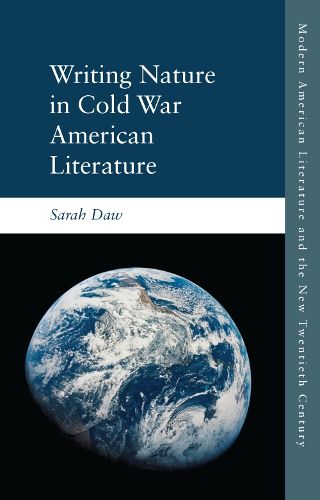Readings Newsletter
Become a Readings Member to make your shopping experience even easier.
Sign in or sign up for free!
You’re not far away from qualifying for FREE standard shipping within Australia
You’ve qualified for FREE standard shipping within Australia
The cart is loading…






First book-length ecocritical study of Cold War American literature
Compelling analyses of the function and representation of Nature in a wide range of Cold War fiction and poetry by authors including Paul Bowles, J. D. Salinger, Jack Kerouac, Allen Ginsberg and Mary McCarthy reveals the prevalence of portrayals of Nature as an infinite, interdependent system in American literature written between 1945 and 1971.
Daw astutely highlights the Cold War’s often overlooked role in environmental history and argues that Rachel Carson’s Silent Spring (1962) can be considered as part of a trend of increasingly ecological depictions of Nature in literature written after 1945. By exploring the most recent developments in the field of ecocriticism, the book is embedded within current ecocritical debates concerning the Anthropocene and anthropogenic climate change.
Key Features
Contains five case studies of six Cold War writers: Paul Bowles, Peggy Pond Church, J. D. Salinger, Jack Kerouac, Allen Ginsberg and Mary McCarthy
Offers an in-depth exploration of the influences behind each writer’s presentation of Nature Shows the Cold War to be a time of seismic change in the human’s relationship to the environment, and demonstrates the degree to which this inflects Cold War literature Engages with the most recent developments in the field of ecocriticism, which drive the study’s analytical methodology and embed the book within current ecocritical debates
$9.00 standard shipping within Australia
FREE standard shipping within Australia for orders over $100.00
Express & International shipping calculated at checkout
First book-length ecocritical study of Cold War American literature
Compelling analyses of the function and representation of Nature in a wide range of Cold War fiction and poetry by authors including Paul Bowles, J. D. Salinger, Jack Kerouac, Allen Ginsberg and Mary McCarthy reveals the prevalence of portrayals of Nature as an infinite, interdependent system in American literature written between 1945 and 1971.
Daw astutely highlights the Cold War’s often overlooked role in environmental history and argues that Rachel Carson’s Silent Spring (1962) can be considered as part of a trend of increasingly ecological depictions of Nature in literature written after 1945. By exploring the most recent developments in the field of ecocriticism, the book is embedded within current ecocritical debates concerning the Anthropocene and anthropogenic climate change.
Key Features
Contains five case studies of six Cold War writers: Paul Bowles, Peggy Pond Church, J. D. Salinger, Jack Kerouac, Allen Ginsberg and Mary McCarthy
Offers an in-depth exploration of the influences behind each writer’s presentation of Nature Shows the Cold War to be a time of seismic change in the human’s relationship to the environment, and demonstrates the degree to which this inflects Cold War literature Engages with the most recent developments in the field of ecocriticism, which drive the study’s analytical methodology and embed the book within current ecocritical debates